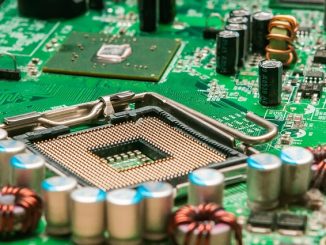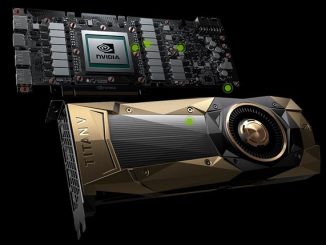- Intel (INTC) announced that two ASML High-NA lithography machines are operational, producing 30,000 wafers with improved reliability, signaling progress in its push for smaller, faster chips amid its first-mover adoption last year.
- Analyst Ming-Chi Kuo criticized Intel’s 18A process, noting Panther Lake samples yield only 20-30%, far below mass production needs for late 2025, and highlighted organizational and supply chain weaknesses that lag behind TSM’s foundry dominance.
- Breakup rumors swirl as Broadcom (AVGO) targets Intel’s design arm and TSMC (TSM) eyes its foundries, potentially valuing Intel at $167-$237 billion, though geopolitical and financial challenges threaten the feasibility of such a split.

Intel’s (INTC) push into the future of chipmaking took a tangible step forward as the company announced Monday that the first two high numerical aperture (High-NA) lithography machines from ASML Holding (ASML) are now operational in its factories, churning out 30,000 wafers – silicon discs that yield thousands of chips – according to senior principal engineer Steve Carson at a San Jose conference. These cutting-edge tools, which Intel received last year as the first chipmaker to adopt them, promise smaller, faster chips and early data suggests they’re outpacing the reliability of their predecessors, a rare bright spot for a company wrestling with its identity and market position. Yet, even as Intel flexes this technological muscle, its broader narrative is clouded by breakup rumors, with Broadcom (AVGO) eyeing its design business and Taiwan Semiconductor (TSM) circling its foundries, a potential split that could value the semiconductor giant between $167 billion and $237 billion but faces steep hurdles from geopolitical risks and regulatory oversight.
The High-NA machines represent a lifeline for Intel, a once-dominant force now straining to reclaim its edge in a chip world ruled by specialists like TSM, the undisputed leader in pure-play foundry work. Analyst Ming-Chi Kuo’s recent X post casts a sharp shadow over these efforts, zeroing in on Intel’s 18A process at its Foundry Services (IFS), where Panther Lake engineering samples are being tested by major PC makers but yield only 20-30%—a far cry from the efficiency needed for mass production slated for late 2025. Kuo doesn’t stop at technical gripes; he digs into Intel’s organizational inefficiencies, supply chain struggles, and a culture that’s failed to adapt to the cutthroat game of winning external foundry clients, leaving it exposed as TSM and others surge ahead.
Intel’s journey with ASML’s machines is a microcosm of its high-stakes gamble to pivot from its legacy as a do-it-all chipmaker to a hybrid model that can compete in both design and fabrication. Producing 30,000 wafers is no small feat – each wafer could spawn thousands of advanced chips, potentially bolstering Intel’s case as it fends off breakup speculation – but the 18A yield woes signal that the road to relevance is bumpy. A Broadcom-TSM carve-up could unlock shareholder value, offloading design to a high-margin player and foundries to a manufacturing titan, yet the financial burden of Intel’s foundry overhaul and the specter of U.S.-China tensions complicate any deal. Carson’s update in San Jose offers a glimmer of progress, but Kuo’s critique underscores a deeper truth: Intel’s technological strides must outpace its structural flaws if it’s to avoid being a giant dismantled rather than revitalized.
WallStreetPit does not provide investment advice. All rights reserved.
- Bulenox: Get 45% to 91% OFF ... Use Discount Code: UNO
- Risk Our Money Not Yours | Get 50% to 90% OFF ... Use Discount Code: MMBVBKSM
Disclaimer: This page contains affiliate links. If you choose to make a purchase after clicking a link, we may receive a commission at no additional cost to you. Thank you for your support!




Leave a Reply